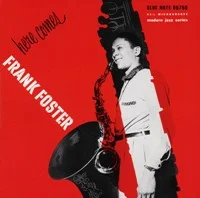Styles: Vocal
Year: 1956/2018
File: MP3@320K/s
Time: 40:46
Size: 94,9 MB
Art: Front
(1:54) 1. I Get a Kick out of You
(3:17) 2. Something to Live For
(3:11) 3. Get out of Town
(3:51) 4. Where Are You?
(2:18) 5. Anything Goes
(3:28) 6. When the Wind Was Green
(3:47) 7. He Was Too Good to Me
(2:51) 8. You Make Me Feel so Young
(3:50) 9. Everytime
(2:32) 10. Way out There
(2:47) 11. My April Heart
(2:14) 12. Almost Like Being in Love
(2:04) 13. Circus (Bonus Track)
(2:35) 14. Flying Home (Bonus Track)
Chris Connor (Hd Remastered)
Year: 1956/2018
File: MP3@320K/s
Time: 40:46
Size: 94,9 MB
Art: Front
(1:54) 1. I Get a Kick out of You
(3:17) 2. Something to Live For
(3:11) 3. Get out of Town
(3:51) 4. Where Are You?
(2:18) 5. Anything Goes
(3:28) 6. When the Wind Was Green
(3:47) 7. He Was Too Good to Me
(2:51) 8. You Make Me Feel so Young
(3:50) 9. Everytime
(2:32) 10. Way out There
(2:47) 11. My April Heart
(2:14) 12. Almost Like Being in Love
(2:04) 13. Circus (Bonus Track)
(2:35) 14. Flying Home (Bonus Track)
Stunningly repackaged, remastered, and featuring new liner notes by leading jazz writers, the Warner Jazz Masters Series includes best sellers as well as rare, sought-after gems. The first jazz vocal LP ever released on Atlantic Records, Chris Connor's self-titled album is one of her best (among considerable competition). Connor's coarse, throaty tone, sweet phrasing, and unerring rhythm were peaking during the late '50s, and the results are delightful tweaks of the standards "Anything Goes" and "Almost Like Being in Love." With similarly excellent results, Connor also transforms a couple of Sinatra's evergreens: "I Get a Kick Out of You," taken at breakneck pace with a small group including pianist John Lewis, bassist Oscar Pettiford, and drummer Connie Kay; "Where Are You"; and "You Make Me Feel So Young," with a ten-piece featuring tenor Zoot Sims and bassist Milt Hinton.
By Editorial Reviews https://www.amazon.com/Connor-Chris/dp/B0009QQ6I0
By Editorial Reviews https://www.amazon.com/Connor-Chris/dp/B0009QQ6I0
Chris Connor (Hd Remastered)




















